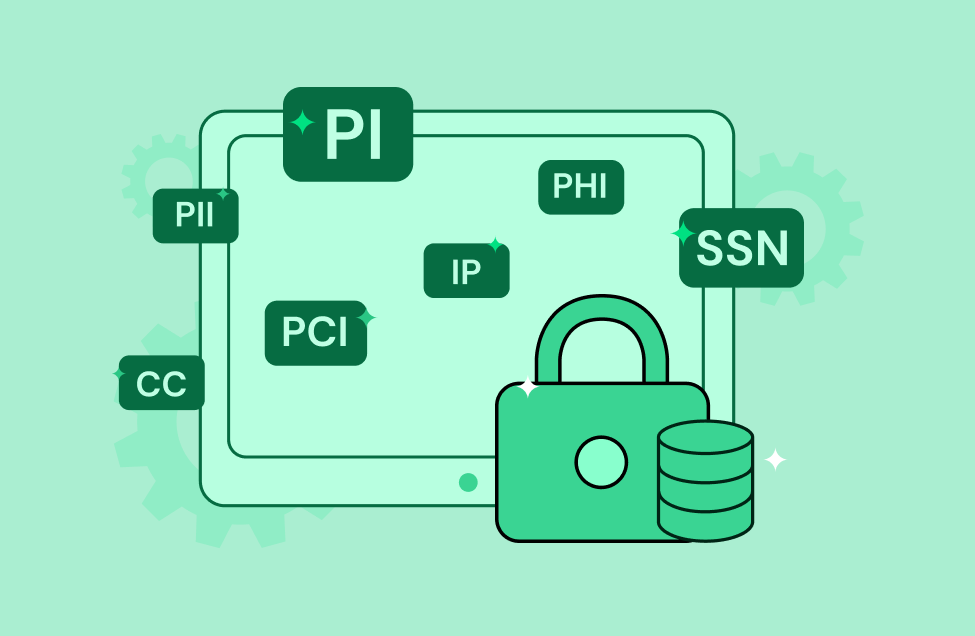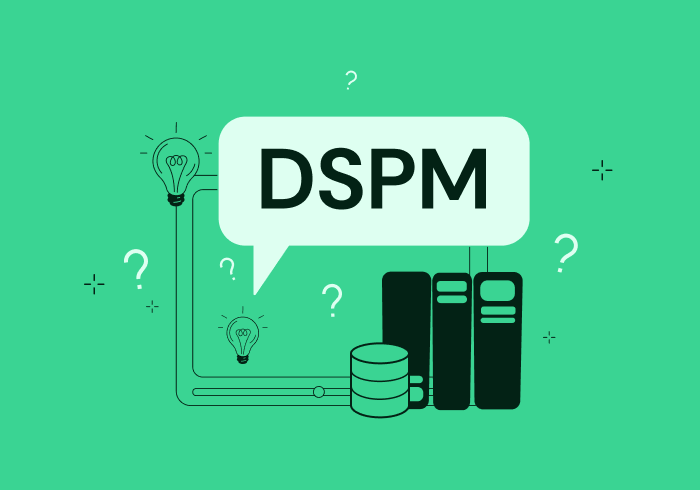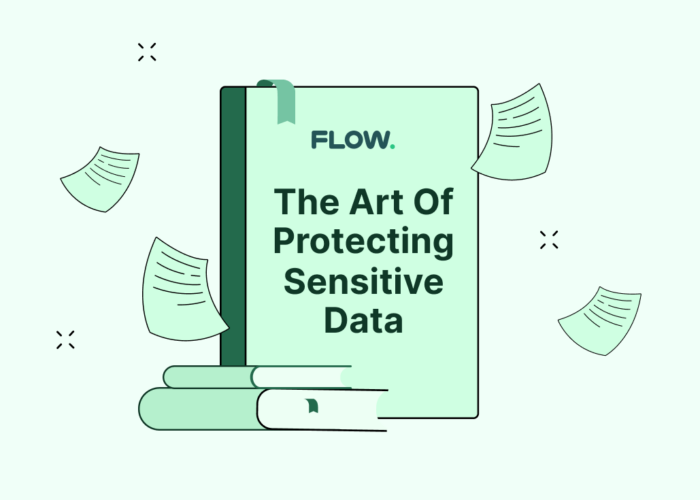Data Classification: The Ultimate Guide to Data Security


Not all data are created equal. In today’s complex digital world, trying to protect every single data asset with equal force is neither feasible nor wise. With terabytes or even petabytes of data on their hands, data security teams need to get more sophisticated – they need data classification.
Data classification is key to safeguarding critical and sensitive data. Categorizing your data allows you to apply effective security measures to the data that actually matters. This is central in protecting data from unauthorized access and breaches, as well as ensuring full compliance with industry regulations and standards.
In this article, we explore different data classification methods, including their benefits and potential challenges, and explore how these can be used to reach your business goals.
The Data Classification Process
Classifying data is a huge challenge, especially given that businesses typically handle vast volumes of data.
Here are a few simple steps you can take to make sure you get it right:
- Define your goals. Before initiating the data classification process, it’s important to first identify security goals in the context of your specific business needs. Ask yourself: What is this for? What is the challenge I’m trying to solve? For example, if your main objective is to comply with privacy regulations, you should regularly assess which laws and regulations your company is subject to, and identify the steps needed to protect data and avoid penalties. Common regulations to watch out for are HIPAA, GDPR, CCPA, CPRA, and PCI DSS.
- Assess the scope and prioritize. Data classification may seem like a monstrous challenge if you handle data on a large scale. But with some strategic thinking, classification can be reduced to manageable dimensions. Evaluating data through a meaningful set of criteria such as risk, value, or regulatory requirements will allow you to concentrate resources and security measures on the most sensitive and valuable information. This can dramatically narrow down the scope of data classification, turning it into a highly-targeted and feasible task.
- Identify the relevant stakeholders in the organization. Get clear on who needs to get on board within the company, including security, GRC and engineering departments. Make sure to map their needs, communication methods and existing workflows, and how they expect to use data classification in their work process.
- Implement the data classification process. Set up and execute the classification methods that work best for your architecture and business objectives. This means working out some technical questions such as – do I scan data at rest or in motion? Do I classify data based on context or content? The next section goes into these considerations in much greater det
- Automate. It can be helpful to streamline the classification process with automated third-party security software such as Data Security Posture Management (DSPM) solutions. These not only relieve you of manually performing arduous and error-prone classification tasks, but can also help you uncover data security gaps and support remediation.
- Integrate with existing workflows. Once you understand what the stakeholders need and for what purpose, you can integrate your classification engine with the way things are done today to minimize friction. This could include, for example, automatically generating RoPA for GDPR audits.
- Reap the benefits of your work. Now that your critical data is being classified, it’s time to translate this into value. From a security perspective, you can define clear policies for securing sensitive data, including role-based permissions that manage how distinct data assets are processed, accessed and stored. From a budget perspective, you can create policies for data retention and storage, determining the appropriate storage location and retention period for each data type.
- Rinse and repeat. It is advisable to regularly reassess and update your classification policies to ensure sensitive data continues to be protected at all times.
Data Classification Methods
Classification is a big topic and there are many things to consider before implementing it in your security toolbox.
In this section we take a look at two big things to take into account – the different types of data classification methods and the types of data being classified.
Context-based vs. Content-based Classification
Data classification comes in two different flavors. To stay on top of data security, it’s important to know what these are and how they differ from each other.
The first type is context-based. Rather than look directly at what a file or a data object contains, context-based classification derives the data type from contextual information such as metadata, including history, attributes, asset owner, and environment. For example, data will be classified as an email address if it is found in a column named “EmailAddress”. Although this type of information is valuable, the conclusions drawn from metadata might be inaccurate, rendering the classification itself wildly misleading.
Content-based classification, on the other hand, determines the data type by observing the data directly. For example, this approach can identify whether a data asset is a name, email, address or credit card number, with a high degree of certainty, even if it is improperly tagged. For example, if a credit card number is located under a “comment” field.
You may be surprised to learn that most solutions perform classification based solely on context. Another subtle point to note here is that you cannot get context without looking at data in motion. The only way to obtain data in motion reliably and at a reasonable cost is to analyze data in runtime through the payload (as opposed to public cloud logs, such as AWS Flow Logs).
So if you want to ensure sensitive data is recognized and classified correctly and cost-effectively, you should partner with a vendor that pairs content-based classification with context-based classification, and make sure the latter is performed through the payload. Otherwise, you run the risk of racking up costs, missing out on important signals and exposing vulnerable data to leaks and breaches.
Structured vs. Unstructured Data Classification
Data comes in different shapes, but it can be broadly divided into two main groups:
- Structured data: in a “key-value” format: CSV, JSON, Excel File, etc.
- Unstructured data: free text, images (that might include free text), videos, documents, etc.
The important thing to note here is that data classification of structured and unstructured data is very different in nature and not all classification solutions can handle unstructured data.
The bottom line is this – if you think you may have sensitive data lurking in unstructured data, it is important to make sure your classification tools can detect and classify them. Even if you think this doesn’t apply to you – take into account that when data is processed by certain applications, it can be changed from structured into unstructured and vice-versa. So classifying unstructured data is almost always a good thing to invest in.
The Benefits of Data Classification
Taking the time to implement data classification tools into your data security operations may take some work, but it comes with some significant advantages.
- Clarity. Data classification provides visibility into the data you have, where they are processed and stored and how they are accessed. By prioritizing data according to sensitivity, organizations can establish clear boundaries around which data should be protected and how they should be handled. Classification makes it much easier to protect sensitive information in dynamic environments, particularly when data flows between the cloud and on-premises or shared with external services.
- Compliance. Reliable data classification is a must if you’re going to meet regulatory requirements, maintain client trust and avoid hefty penalties. By categorizing data according to sensitivity, organizations can set effective governance policies that ensure confidential information is protected in accordance with the law.
- Cost Savings. Data classification allows companies to take a targeted approach to data security, investing strategically in protection measures where the risk is the greatest, and identifying and discarding data that is no longer needed. In addition, when data is categorized, security teams can more quickly spot vulnerabilities and fix issues that compromise sensitive data.
- Better Decision Making. Categorizing data by sensitivity or business value can help inform decisions and reduce the time it takes to manage data. For example, classification can help uncover and eliminate stale or redundant data and set smarter retention policies on your storage.
The Challenges of Data Classification
When incorporating data classification into your data protection strategy, there are some big pitfalls to watch out for. Let’s walk through some of these and how to handle them.
Cost Control
With the massive volumes of data generated daily, allocating adequate time and resources to collect, classify, monitor, and maintain them can quickly become expensive and complex, particularly when dealing with legacy data. Competing priorities and limited budgets can further exacerbate this problem.
To address this challenge, organizations can adopt an automated approach, eliminating labor-intensive tasks and the human error that comes with them. Additionally, organizations can prioritize the classification of the most sensitive pieces of information and implement policies that prevent the collection of unnecessary data, thereby saving time and effectively controlling costs.
Over-reliance on Engineering Teams
Depending only on IT and engineering teams for data classification can create bottlenecks, tax teams, and lead to errors. With the complexity of the classification process and its technical requirements, this practice may not be sustainable in the long run.
Automation can come to the rescue here as well. It can speed up the classification process, enhance its accuracy, and eliminate tension that may build up between security and engineering teams.
Inconsistent Policies and Formats
Having inconsistent policies and formats chosen by different departments and teams can lead to confusion and errors, resulting in the loss of information, poor classification, and a waste of resources.
To prevent this issue, organizations should establish standardized policies and formats that are adhered to consistently across departments.
Automated tools can help maintain this standard by enforcing predefined policies and formats. Regular monitoring, updates, and reviews can also help ensure these policies and formats remain relevant and effective.
Incorrect Classification or Missing Context
Incomplete labels, poorly sorted data, missing context or duplicate and ambiguous information – all these can lead to poor data classification. This, in turn, can result in critical oversight. For example, the names of individuals may be ascribed a lower level of sensitivity, but if they appear in a health or financial record, they should be tagged as sensitive and confidential.
To address these challenges, organizations should pay special attention to how data is collected, making sure it takes into account metadata and missing links, and how to go about completing them.
Automation tools can further help with this, using machine learning algorithms that mitigate anomalies, update policies, fix formats, and monitor data collection cost-effectively.
Flow Security’s Data Classification Engine
Flow Security’s DSPM solution provides automated data classification that is based both on context as well as content. It is built to discover and classify structured and unstructured data no matter where it flows – whether on-premises, in the cloud or when it is transferred to external services and shadow databases.
The engine classifies the data by analyzing the data payload in real time. This means that not only is the classification more accurate, but you also know more than just the data type. By analyzing the data payload you also have the context: how the data was generated, by whom and when. For example, with Flow you can know the context around a list of emails: was the list generated by an insider, a contractor, or is it purchased?
But Flow doesn’t just classify data. Based on its highly accurate classification engine, the platform allows you to set precise controls on that data – so you are alerted of any violation, respond quickly to security incidents, comply with regulations, and bring your security posture to new heights.
Conclusion
Every moment that passes, the amount of data under your care increases. Without a proper data classification strategy, businesses risk exposing sensitive information and facing severe legal and reputational consequences.
Having a strong data classification engine is imperative if you want to set rules and security controls that actually do their job. If you don’t have a firm grasp on what kind of data is flowing through your system, it will be nearly impossible to comply with regulations and mitigate risk.
The good news is that you don’t have to do this all by yourself. There are excellent third party tools out there that will get the job done for you. If you go down this path however, there are several important things to watch out for.
Three big things to assess before you sign a contract with an outside vendor that claims to classify data is:
- How accurate is the classification solution? (i.e can it handle unstructured data, does it use content as well as context).
- Is the solution automated and how well does it integrate with your workflow?
- Does the solution merely classify the data or does it also come with tools that will enhance your organization’s security posture and provide reliable alerts that don’t cry wolf?
If the vendor ticks all these boxes, chances are your classification journey will start on the right foot. This is cause for celebration – high quality classification is one of the big milestones in reaching near-perfect security posture.


